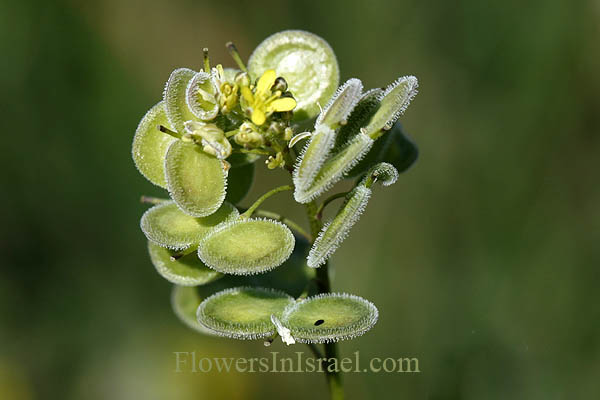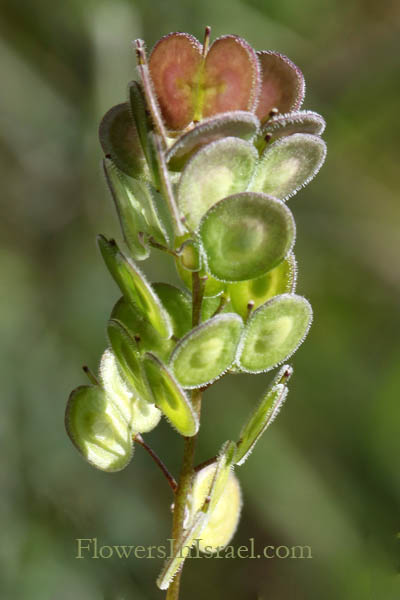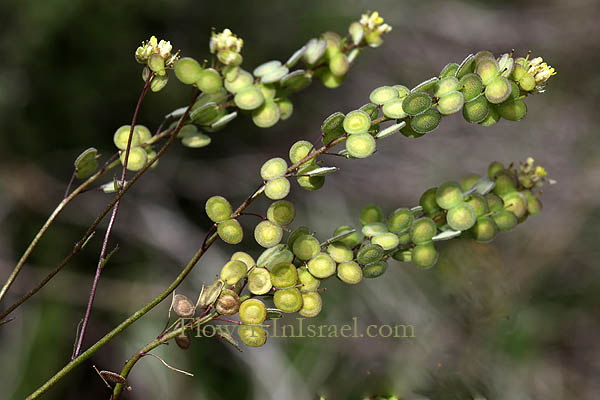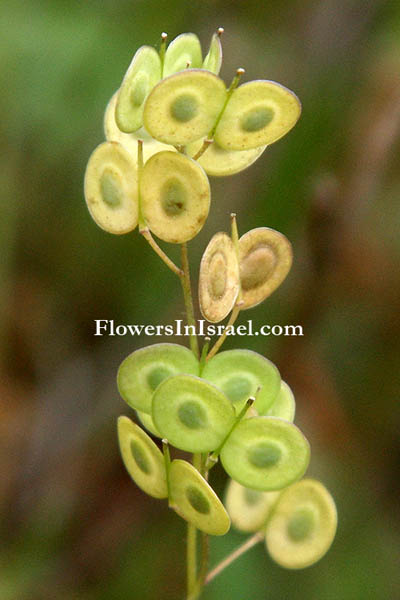Hebrew: מצלתיים מצויות , Arabic: بسكوتيلا زوجية
| Scientific name: | Biscutella didyma L. | |
| Synonym name: | Biscutella columnae Ten., Biscutella ciliata DC., Biscutella apula L. | |
| Common name | Buckler Mustard | |
| Hebrew name: | מצלתיים מצויות | |
| Arabic name: | بسكوتيلا زوجية | |
| Plant Family: | Cruciferae / Brassicaceae, מצליבים |

|
| Life form: | Annual | |
| Stems: | 15-50 cm; erect, simple or branched, hirsute with stiff hairs | |
| Leaves: | Alternate, rosette arrangement, entire dentate or serrate leaves | |
| Flowers: | Yellow | |
| Fruits / pods: | Silicula, a dry dehiscent fruit; fruit valves flat, orbicular, glabrous or pubescent with short clavate hairs, 1-seeded, indehiscent; radicles accumbent | |
| Flowering Period: | January, February, March, April, December | |
| Habitat: | Batha, Phrygana, Shrub-steppes | |
| Distribution: | Mediterranean Woodlands and Shrublands, Semi-steppe shrublands, Shrub-steppes, Deserts and extreme deserts, Montane vegetation of Mt. Hermon | |
| Chorotype: | Med - Irano-Turanian | |
| Summer shedding: | Ephemeral |

Derivation of the botanical name: Biscutella, Latin, bis, twice; scutella, a small flat dish; in allusion to the form of the fruits. didyma, Greek, didymos, διδυμοϛ, double; two fruited. columnae, named for the 16th century Italian botanist Fabio Colonna (Latin: Fabius Columnus). ciliata, fringed with hairs, ciliate. apula, from Apulia, (now Puglia) north of Calabria, area in south-east Italy on the Adriatic Sea. The Hebrew word: מצלתיים, Metziltaim, from מְצִלְתַּיִם, Metziltaim, dual cymbals, the fruits are cymbals-like.


|